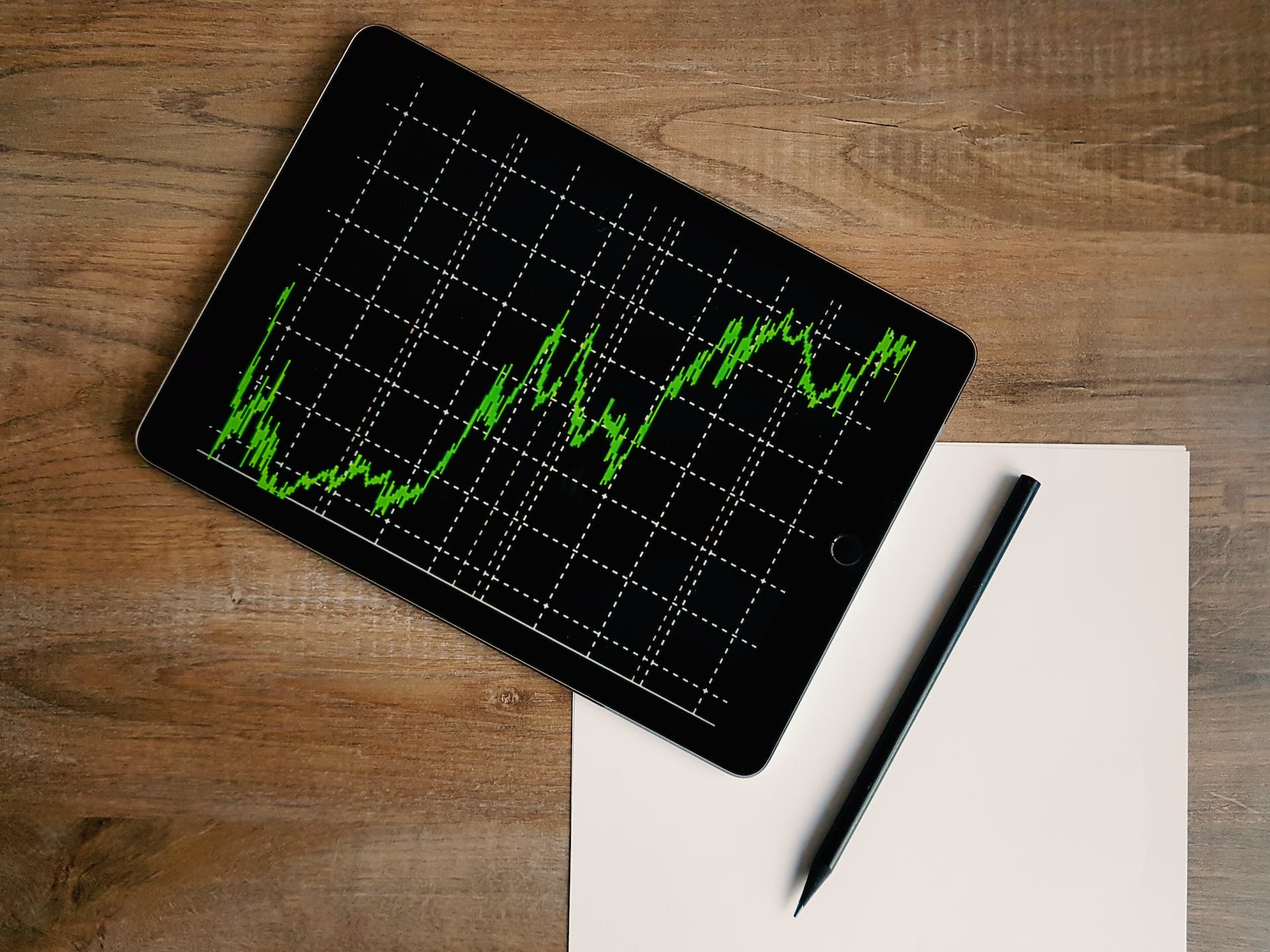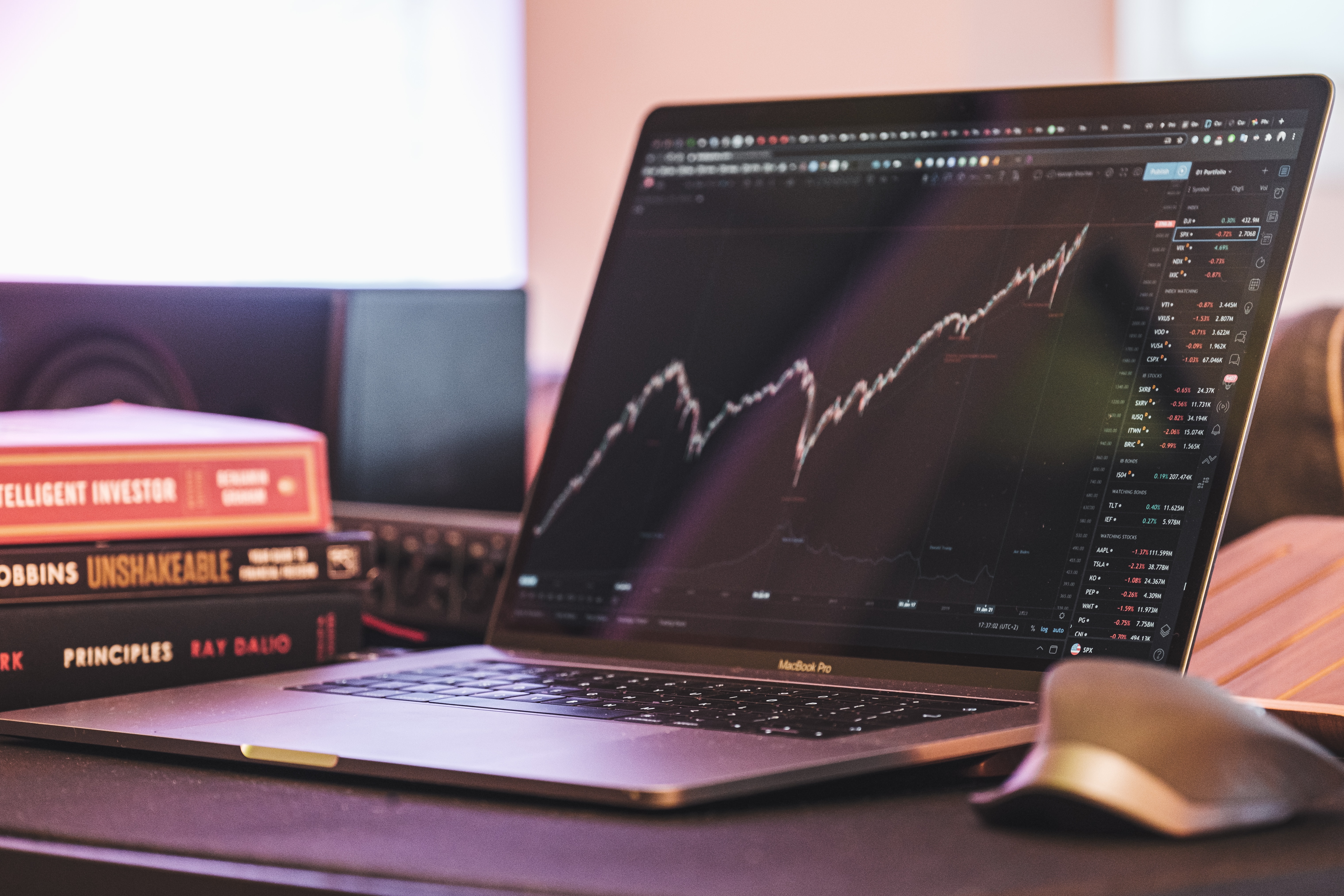What Is a Dividend: Complete Guide

In an increasingly investment-driven world, a fundamental question continues to perplex new investors: what is a dividend? This simple query opens the door to a critical facet of investment strategy that can often tip the scales in favor of informed and strategic investors. In this article, we will explore dividends, their definition, main types, and features. Stay tuned to sharpen your investment acumen, and start making more informed financial decisions.
Table of Contents
Dividend What Is It?
Understanding Dividends
Example of a Dividend?
Types of Dividends
Preferred vs. Special Dividends
What are Important Dividend Dates?
Examples of Dividend-Paying Companies
How Do Dividends Influence a Share Price?
What are Fund Dividends?
How to Evaluate Dividends?
How are Dividends Paid Out: Example
How to Buy Dividend-Paying Investments
Why to Invest in Dividend Stocks?
How to Choose the Right Dividend Stock?
Are dividends taxed?
What is a hidden dividend?
Key Takeaways
FAQ
Dividend: What Is It?
At the heart of the investing world, there's a term that often buzzes around: the dividend. But many people ask a fundamental question about a dividend: what does it mean?
A dividend is the sum of undistributed profits that a company decides to share with its stockholders. Think of it as a slice of the company's earnings pie that lands on your investment plate. Essentially, when a business is thriving and makes more money than it needs for operations and growth, it often returns a part of this excess to those who own company shares, aka, the shareholders.
Understanding Dividends
Simply put, a dividend represents a mechanism through which a business shares its accumulated earnings directly with its shareholders. Generally dispensed in the form of cash or supplementary shares, this monetary reward provides a palpable return on investment that goes beyond the potential increase in the value of shares.
It's not just individual companies that issue dividends. In actuality, mutual funds and exchange-traded funds (ETFs) also disburse dividends to their investors. These dividends stem from the revenue created by the fund's underlying investments, frequently a varied collection of stocks that pay dividends.
What Is an Example of a Dividend?
Let’s say that a company announces that it’s going to dispense dividends to its stockholders. The board of directors authorizes a dividend of $1.00 for each of the company shares in circulation. If an investor has 200 shares of this company, he will receive a 200*$1=$200 dividend payment purely for having a stake in this particular company.
Types of Dividends
In the financial universe, not all dividends are created equal. In this section, we will take a closer look at various types of dividends and their core features.
Cash dividends
Cash dividends are the most common type, involving the straightforward transfer of cash from the company to the shareholders. For those in search of a steady, tangible return, cash dividends are often a preferred choice.
Stock dividends
Stock dividends are not offered as cash, but rather, they're given in the form of additional company shares. This form of dividend can often lead to an expanded investment position in a company, rewarding investors who are in it for the long haul.
Scrip dividends
Instead of disbursing profits in the form of cash or extra shares, companies can issue scrip dividends as pledges enabling shareholders to purchase more shares, frequently at a reduced cost. This method simultaneously preserves the firm's cash holdings while allowing shareholders an opportunity to strengthen their investment in the company. It’s a beneficial strategy for investors looking to expand their holdings over the long run.
Property dividends
A relatively uncommon, but intriguing type of dividend is the property dividend. In this case, a company distributes dividends in the form of tangible assets, which could range from real estate to raw materials, instead of cash or additional shares. While not a standard practice, this form of payout provides a tangible form of return and can be an interesting option for investors seeking diversity in their portfolios.
Liquidating dividends
Liquidating dividends is essentially a return on the shareholders' original investment, sourced from the company's capital rather than its earnings. It illustrates the remaining value of the firm after all assets have been sold off and outstanding debts settled.
Preferred vs. Special Dividends
When analyzing dividends, it's crucial to grasp the distinction between preferred and special dividends.
Preferred dividends are the payouts allocated to owners of preferred stocks. These investors are first in line when it comes to dividend disbursements, hence the label “preferred.” They enjoy a fixed dividend rate of return, bringing predictability and steadiness to their investments.
On the other hand, special dividends are a one-time, unique distribution, issued by a company experiencing a windfall, like an unexpected profit surge or a major asset sale. This isn't a regular income source for investors, rather a pleasant surprise that may significantly enhance returns.
What Are Important Dividend Dates?

To understand dividends, recognizing critical dates is essential. When it comes to earning a dividend on shares, these dates dictate your eligibility and timeline for receiving returns.
-
Declaration date. Here, the board of directors announces the company's intention to conduct payment of dividends, detailing the size and the expected payment date.
- Ex-dividend date. This is crucial in determining your right to a dividend. If you purchase shares before this date, you are entitled to the next dividend payment. Buy after this date, and you'll need to wait for the subsequent dividend cycle.
- Payment date. This is when the payout day actually occurs. Shareholders can expect to receive their dividend either as a check in the mail, a direct deposit into their bank account, or sometimes as additional shares of stock.
Examples of Dividend-Paying Companies
For many investors, dividend-paying companies form an integral part of their portfolios. Let’s consider some examples.
Microsoft Corporation (MSFT), with its leading position in the technology sector, pays out annual dividends. The steady rise in the company's share price, coupled with the consistent dividend payout, is a testament to Microsoft's financial prowess.
AT&T Inc. (T) is another example of a strong dividend payer. With an enticing annual dividend yield, it provides a consistent cash return to its investors, which helps offset some of the risks associated with the volatility of its share price.
One more company that stands out for its regular monthly dividends is Main Street Capital Corporation (MAIN). Its investment portfolio is highly diversified across many industries and individual companies, providing a measure of security against any single sector's downturn. Their approach to offering monthly dividends makes them attractive to investors seeking a steady stream of income.
How Do Dividends Influence a Share Price?
)
Dividends play a crucial role in the fluctuation of a stock's market price. The announcement of a dividend generally elicits a positive reaction in the market, causing an uptick in the share price. Nevertheless, the situation changes as the ex-dividend date approaches. People who buy the stock on or beyond this date won't be entitled to the announced dividend, a factor that influences a downward adjustment in the stock's price.
What Are Fund Dividends?
Fund dividends, such as those from bonds or mutual funds, stand in contrast to dividends given out by corporations. These funds work based on the total value of the things they own, known as Net Asset Value, or NAV. For example, a bond fund usually gives money to its investors every month. But this doesn't mean the fund is doing really well. It's just passing on the money it gets from its own investments.
On the other hand, a stock fund gives out money from the profits of the different stocks it owns, or by selling some stocks and sharing the profit. So, the way funds and businesses give out money can be very different.
How to Evaluate Dividends
There are several components that allow shareholders to assess the “right to dividend,” providing invaluable insights into the company's profitability and financial health. Let’s have a look at some of them.
Dividend Per Share (DPS)
DPS outlines the actual cash paid out from the company’s reserve capital created from earnings. It's simple arithmetic – the total annual dividends divided by the number of outstanding shares. A higher DPS can indicate a more generous company, but investors shouldn't be swayed by high numbers alone.
Dividend Yield
The dividend yield, on the other hand, offers a view of the company's dividend compared to its current market price. It’s a helpful tool for those seeking income-producing stocks, particularly when rates outpace standard bank interest.
Dividend Payout Ratio
The dividend payout ratio elucidates how much of the net income is returned to shareholders as dividends. It’s a testament to the company's sustainability, as it reveals the balance between income retained for growth and dividend payments.
How Are Dividends Paid Out: Example
Suppose you own 500 shares of Company X, and it announces a dividend of $2 per share.
- When the board of directors declares this dividend, they'll set a record date. Let's say it’s August 1st. If you are the registered owner of those shares on that date, you're eligible to receive the dividend.
- Then comes the day of dividend payment, say August 15th. On this day, the company pays out the dividends. If the payment is via direct deposit, you'd see $1,000 (500 shares * $2 per share) appear in your bank account. If it’s by check, you'd receive it in the mail.
Why Companies Pay Dividends
Companies that pay dividends are typically well-established, with steady, predictable profits. These firms reward shareholders with a portion of these earnings, using dividends as a tangible demonstration of their financial health. Dividends serve to build investor confidence and attract a stable shareholder base
Why Companies Don't Pay Dividends
However, there are companies, often in the growth or tech sectors, that don't pay dividends. What’s the reason? Reinvestment. These firms opt to funnel their earnings back into the business, funding research and development, acquisitions, or infrastructure upgrades.
How to Buy Dividend-Paying Investments

Those pursuing dividend investments have a plethora of choices, such as stocks, mutual funds, and ETF dividends. Techniques such as the dividend discount model or the Gordon growth model can aid in selecting stock investments by utilizing expected future dividends to determine share value. The dividend yield, presenting dividends as a percentage of the current share market price, makes it possible to compare multiple stocks based on dividend payment performance.
Tax implications should also be a crucial consideration. Some jurisdictions, like Greece and Slovakia, apply lower taxes on dividend income, while places like Hong Kong offer tax exemptions on paid dividends gains. Additionally, the total return factor, which includes interest, dividends, and share price increases, is a key performance measure that investors should account for when assessing potential returns from an investment.
Why Invest in Dividend Stocks?
Dividend stocks attract a variety of investors for numerous reasons. For one, they provide a reliable income source, essential for retirees or those seeking consistent returns. They allow participation in potential capital appreciation, offering a protective layer against inflation-induced expenses. Younger investors often reinvest their dividends, enhancing portfolio growth. Dividend reinvestment programs or plans, or DRIPs, can facilitate this process.
Also noteworthy is the tax advantage associated with many dividend stocks, with qualified dividends often attracting lower taxes than ordinary income. Stocks pay dividends frequently with higher returns than bonds, particularly in low-interest-rate environments. Moreover, dividends can bolster portfolios during market downturns, providing steady income even as company share prices fluctuate.
How to Choose the Right Dividend Stock?
Choosing the right dividend stocks to invest in involves a thoughtful evaluation of several key metrics, including the strength of the business model, operating trends, margins, financial health, management, and future business prospects. A significant measure to consider is the dividend yield, reflecting the income investors receive for each dollar invested.
However, one should exercise caution: high-yielding dividend stocks may seem appealing but often indicate a higher risk of unsustainable dividends. A seemingly increasing dividend yield could actually signify a falling share price. Therefore, prioritizing the financial health of the company over high dividend yields can guide investors towards more sustainable, lower-risk dividend stocks. This approach ensures dividends are not merely compensation for poor fundamentals, but a reflection of robust financial performance.
Pay Attention to Company Fundamentals
When investing in dividend stocks, understanding the company's underlying financial health is critical. This involves reviewing key data such as balance sheets, profit-and-loss statements, and, importantly, the free cash flow. The free cash flow, derived from subtracting capital expenditures from the operating cash flow, is the wellspring of dividend payments.
Consequently, a company's capacity to produce free cash flow is integral to persistent dividend distributions. Investors should be wary of companies with substantial debt as it could lead to prioritizing mandatory bondholder payments over optional shareholder dividends.
Use the Payout Ratio to Find Sustainable Dividends
Available under the Company Vitals, the dividend payout ratio calculates the proportion of a firm's earnings that are distributed as dividends, serving as a key indicator of dividend sustainability. A lower payout ratio, signaling a smaller portion of earnings paid out to shareholders, is often viewed more favorably.
This suggests that the company has the flexibility to maintain dividends even if earnings drop, or increase dividends if earnings grow.
Look for Dividend Potential
When aiming for an ever-increasing income stream from stocks, a focus on sustainable dividends with growth potential is crucial. Unlike bonds, with their fixed rates, these dividends offer the possibility of growth over time. Key to finding these lucrative opportunities is identifying companies that have demonstrated a consistent history of dividend increases, even in challenging economic climates.
Consider Dividend Funds
Dividend funds, which encompass a broad array of dividend-paying companies, offer a simplified and diversified alternative to selecting individual stocks for those targeting dividends. By investing in dividend-focused ETFs or mutual funds, individuals can receive steady income and potential capital growth, while bypassing the need for continuous individual stock surveillance and decision-making.
How Much to Invest in Dividend Stocks?
The amount to invest in dividend stocks largely depends on your financial goals, risk tolerance, and investment timeline. While there's no definitive figure, investing between 20% and 50% of your portfolio in dividend stocks could provide stability and regular income, given their link to well-established companies. But remember, diversification is key to mitigating risk.
Are Dividends Taxed?
The taxation of dividends plays a significant role in shareholders' total returns. In the United States, as of my last update in 2021, the tax on dividends can be categorized into two forms: qualified and non-qualified dividends. Qualified dividends, which meet certain IRS criteria, are taxed at capital gains rates, ranging from 0% to 20% based on the taxpayer's income level. On the other hand, non-qualified dividends are taxed at the individual's regular income tax rates.
What Is a Hidden Dividend?
A hidden dividend refers to a form of profit distribution that is not directly declared as a dividend by a company. This could involve indirect benefits provided to shareholders, such as generous employee benefits for shareholder-employees, or business expenditures that disproportionately benefit shareholders. Hidden dividends, though not explicitly named as such, still represent a form of value returned to shareholders outside the conventional dividend payments.
Key Takeaways
In conclusion, understanding dividends and what they mean can be a game-changer for investors. As we’ve explored, a dividend is a slice of a company's profits shared with shareholders, providing a tangible return on their investment. It's essentially an incentive, coaxing investors to stay on board for the long haul.
Decoding the essence of dividends and their strategic implications is paramount. It will broaden your understanding of the investment terrain, enabling savvy decisions that could have significant financial payoffs.
FAQ
Dividend: What does it mean?
Dividends are payments made by a company to its shareholders from its profits or reserve capital. These can be cash, regular, or stock dividends, and can influence the company's share price.
How often are dividends paid?
Dividend payments typically occur quarterly, semi-annually, or annually, although some companies may pay them monthly. The schedule depends on the company's policy and factors like profit distribution and the dividend payout ratio.
How does a dividend work?
Dividends are payments from a company's profits or reserve capital to shareholders. The company management decides what portion of earnings to distribute as dividends. On the specified dividend date, eligible shareholders receive these payments in forms like cash or stock dividends, affecting both the company's share price and the shareholder's taxable income.
Who receives the dividend?
Dividends are received by eligible shareholders who own the company's shares on or before the ex-dividend date. These payments, which can be cash, stock, or property, represent a share of the company's profits distributed proportionately according to each shareholder's ownership stake.
Is a dividend a profit?
A dividend is not profit, but it's closely related to it. When a company earns a profit, a portion of these earnings may be distributed to shareholders in the form of dividends, while the rest is typically reinvested in the business.
How much is the tax on dividends?
Dividend tax varies by jurisdiction and income level. In the U.S., as of 2021, qualified dividends can be taxed from 0% to 20% based on the taxpayer's income, while non-qualified dividends are taxed at regular income rates. For accurate rates, consult a tax professional or use a dividend calculator, as tax laws can change frequently.
Which companies pay the highest dividends?
Companies in mature industries like oil and gas, utilities, and consumer goods often pay the highest dividends due to stable earnings and lower growth opportunities. However, the highest-paying companies can change over time, so it’s advised to conduct continuous research and use tools like a dividend calculator to identify current high dividend payers.





)
